AI Climate Analysis for Urban Planting Success
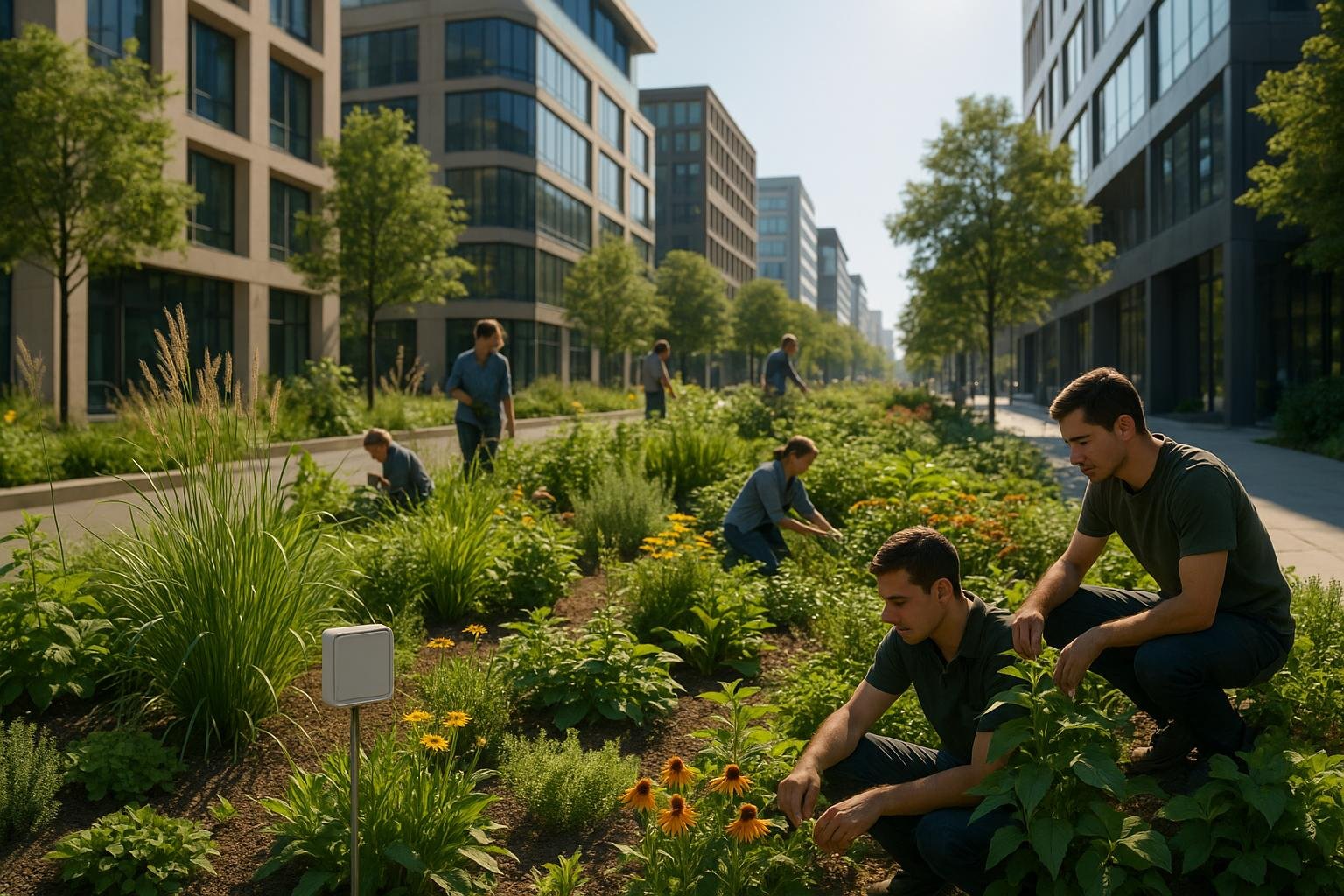
AI is reshaping how cities approach urban planting by offering precise, data-driven insights into climate conditions and plant selection. Compared to older methods, AI tools analyze vast datasets, predict risks, and optimize resources, making urban greenery more efficient and resilient. For instance, AI-powered systems can reduce water use by up to 95% and boost crop yields by 30%. However, they require significant upfront investment and high-quality data.
Key Takeaways:
- AI Advantages: Improved accuracy, lower resource use, and better climate resilience.
- Challenges: High initial costs and reliance on consistent data.
- Comparison: Older methods are accessible but less precise, while AI offers advanced solutions for modern challenges.
Quick Comparison:
| Aspect | AI-Based Systems | Older Methods |
|---|---|---|
| Accuracy | High, with dynamic climate analysis | Limited, relies on static data |
| Resource Use | Optimized (e.g., 95% less water) | Higher consumption, less efficient |
| Cost | Expensive upfront ($60K–$400K) | Lower initial costs |
| Data Dependence | Requires large, quality datasets | Minimal dependency |
| Scalability | Handles complex systems, needs expertise | Easily implemented, less precise |
AI is transforming urban planting, but a mix of both approaches may offer the best results for cities balancing cost and efficiency.
BREAKOUT 6 - AI for Environment: AI-based prediction of urban climate and its impact on built...

1. AI-Based Climate Analysis
AI-driven climate analysis is reshaping urban planting by processing massive amounts of environmental data with remarkable precision. By combining satellite imagery, weather patterns, and historical disaster data, it creates detailed environmental profiles for cities, paving the way for more accurate predictions in urban planting outcomes [4].
Accuracy
AI takes climate modeling to the next level by identifying subtle patterns and localized trends that traditional models often miss. These advanced systems not only enhance prediction accuracy but also streamline efficiency, enabling better decision-making. For instance, IBM's PAIRS Geoscope uses geospatial data to predict flood risks, helping cities take proactive measures [4]. Unlike traditional models, which can be resource-intensive and prone to uncertainties, AI-based systems excel at detecting nuanced environmental changes [5].
Resource Efficiency
AI systems bring significant resource savings to urban farming. By analyzing real-time data on plant health, soil moisture, and surrounding conditions, they optimize water usage and nutrient delivery. For example, AI algorithms can adjust indoor lighting to mimic sunlight, reducing energy consumption by up to 25%. Techniques like precision irrigation ensure resources are used efficiently, cutting waste and boosting productivity. Vertical farms powered by AI can use up to 95% less water, while urban farms report a 30% increase in productivity alongside a 20–25% reduction in water and energy use [2].
| Metric | Traditional Urban Farming | AI-Powered Urban Farming |
|---|---|---|
| Water Consumption (gallons/sq ft/year) | 15–20 | 1–2 |
| Energy Usage (kWh/sq ft/year) | 30–40 | 20–25 |
| Crop Yield (lbs/sq ft/year) | 2–3 | 4–5 |
| Operational Costs ($/sq ft/year) | $15–20 | $10–15 |
| Carbon Footprint (CO₂ kg/sq ft/year) | 5–7 | 2–3 |
These advancements allow urban farms to allocate resources more effectively, directly improving planting outcomes.
Climate Resilience
AI enhances climate resilience by refining predictive models and integrating diverse data sources. This technology informs strategic decisions, such as where to plant trees or create green spaces, to counteract urban heat islands and improve outdoor comfort [8]. AI tools also monitor urban greenery, tracking environmental stressors and tree health, which allows for proactive management [10].
Several cities demonstrate how AI bolsters climate resilience. In Palermo, Sicily, digital monitoring tools help maintain green spaces during droughts [7]. Melbourne's Fishermans Bend uses digital twins to model real-time and historical data, optimizing building designs and sunlight distribution in open areas [7]. In Singapore, AI analyzes weather patterns and water levels to detect early signs of flooding, enabling proactive stormwater management [9]. Tools like Tree-D Fusion create 3D models of urban trees, helping planners visualize future green spaces and address climate challenges [10].
"AI's transformative potential in urban climate resilience lies in its capacity to process complex data, predict risks, and optimize resource management for sustainable urban futures." – Sustainability Directory [8]
AI also predicts micro-climatic shifts within cities, guiding the selection of drought-resistant or heat-tolerant plants. Additionally, it helps recycle urban organic waste and wastewater into valuable inputs for urban farms, closing the loop on resource use [6].
Cost Effectiveness
AI reduces the financial burden of urban planting projects by cutting operational costs and improving long-term sustainability. Predictive tools powered by AI and big data analytics help urban planners anticipate challenges, minimizing maintenance expenses. By analyzing real-time data from multiple sources, cities can prepare for natural disasters like floods, earthquakes, or fires, transitioning from reactive to proactive strategies [4].
2. Standard Planting Methods
Traditional urban planting methods, while grounded in long-standing horticultural practices, often struggle to meet the challenges posed by rapidly changing urban climates. Although these approaches have been effective in many situations, they reveal significant shortcomings when applied to the complexities of urban environments.
Accuracy
Conventional planting methods rely heavily on static climate niches, which often fail to account for the influence of urban infrastructure and human activity. For example, research in Beijing shows that nearly 49% of local plant species may lose their adaptability to future climate conditions when assessed using traditional methods. However, under current conditions, 75.9% of these species are thriving and are expected to adapt well to future changes [1].
This gap highlights a major issue: traditional methods often overlook the microclimates created by human activity, which can enable species to thrive in ways not predicted by conventional models [1]. This lack of predictive accuracy directly impacts resource allocation and management in urban planting efforts, making it harder to plan effectively.
Resource Efficiency
Traditional planting methods often lack the precision needed to manage resources efficiently, leaving them vulnerable to weather fluctuations and mismanagement. This inefficiency can harm yields and compromise food security [12].
| Resource Management | Traditional Methods | Modern Alternatives |
|---|---|---|
| Water Usage | High consumption, low precision | 30–50% water savings possible |
| Fertilizer Application | Frequently over-applied | Up to 40% reduction achievable |
| Energy Consumption | Standard equipment usage | 15–20% fuel savings with precision tools |
When comparing traditional farming to modern techniques, the difference becomes even more apparent. For instance, vertical farming can reduce water use by 98% and land use by 99% compared to conventional methods [11]. Even traditional greenhouse farming, which boosts yields by 10–12 times compared to field farming, pales in comparison to the resource efficiency of newer approaches [12]. These inefficiencies make traditional methods more susceptible to the risks posed by climate change.
Climate Resilience
Urban greenery plays a crucial role in mitigating heat and improving local climates. For example, urban trees can lower neighborhood air temperatures by up to 10°F, with shaded surfaces cooling by 20–45°F. This can also reduce home energy costs by as much as 25% [14]. In Phoenix, Arizona, the organization Trees Matter planted 33 15-gallon trees at a school near a highway, reducing surface temperatures by 10–15°F in areas affected by urban heat islands [14].
Traditional agroecosystems also demonstrate notable resilience. The Elche Palm Grove, for instance, provides significant thermal regulation in semi-arid regions, extending its cooling effect several hectometers beyond its perimeter. This example shows how traditional methods can still deliver substantial climate benefits [15].
Cost Effectiveness
Traditional planting methods often come with higher upfront labor costs and rely on reactive maintenance, leading to greater long-term expenses.
Studies comparing conventional crop management to advanced systems reveal striking economic differences. For example, an intelligent crop management system using reinforcement learning achieved a 49% increase in economic profit for maize production compared to traditional methods [13]. Additionally, standard management systems often require more manual oversight, while precision agriculture tools can reduce administrative overhead by 15–20% and improve overall efficiency by 10–25% [13].
Businesses adopting modern resource management techniques report input cost reductions of 15–30% compared to traditional approaches [13]. Furthermore, the seasonal dependency of conventional methods adds financial risks, as unpredictable weather can significantly affect yields and profitability [12].
These challenges emphasize the need for planting strategies that are more adaptable, efficient, and cost-effective in addressing the demands of urban environments.
sbb-itb-4d6a8dd
🚀 Ready to Reinvent Your Garden?
Join thousands of homeowners who have transformed their gardens using our AI design tool. Upload one photo to explore endless possibilities.
Get your AI garden designs →Pros and Cons
When comparing AI-driven climate analysis with traditional methods, it's clear that both offer distinct benefits and face unique challenges. These differences have implications for how they are applied in the short term and how they perform over time. Here's a closer look at the strengths and limitations of each approach:
| Aspect | AI-Based Climate Analysis | Standard Planting Methods |
|---|---|---|
| Accuracy | Utilizes extensive datasets to create dynamic climate profiles. | Relies on historical data and static climate records. |
| Resource Efficiency | Optimizes water use and crop yields, potentially cutting production costs by 20–30% [16][21]. | Operates on conventional methods without data-driven insights. |
| Initial Investment | Requires significant upfront costs (ranging from $60,000 to $400,000) and advanced technical infrastructure [20]. | Lower cost, using traditional horticultural techniques. |
| Scalability | Needs to handle diverse climates and large datasets while maintaining precision [3]. | Easily implemented with established practices across various locations. |
| Data Requirements | Depends on consistent, high-quality data, which can be a challenge in areas with limited resources [3]. | Based on local observations and historical knowledge. |
| Decision Transparency | Relies on deep learning models that can be difficult to interpret [3][18]. | Grounded in clear, well-known horticultural principles. |
| Equity Considerations | Risks excluding underrepresented communities if data lacks inclusivity [18]. | - |
Beyond these measurable factors, there are additional challenges to consider, especially with AI. Urban systems are inherently complex, making it difficult for AI to fully account for variables like human behavior and policy changes [18]. This can lead to oversimplified models that might misguide planting decisions if not carefully monitored.
Financially, the contrast between the two methods is stark. AI has the potential to enhance resource efficiency by up to 50 times [21], but the costs can be prohibitive for many. The AI in Agriculture Market is expected to grow from $1.7 billion in 2023 to $4.7 billion by 2028 [19], signaling a significant investment trend. Companies that adopt AI solutions often report faster revenue growth and better returns, but the initial expense remains a barrier for many urban planning departments.
On the other hand, traditional methods are accessible and proven, especially in stable environments. They require no specialized training or complex infrastructure, making them ideal for communities with limited resources. However, as cities contribute roughly 70% of global carbon dioxide emissions and consume nearly 75% of the world’s energy [4], the precision and efficiency offered by AI become increasingly important for sustainability.
Ethical and privacy concerns also come into play with AI. Large-scale data collection raises privacy issues [18] and, if not carefully managed, could exacerbate existing inequities.
"We're bridging decades of forestry science with modern AI capabilities. This allows us to not just identify trees in cities, but to predict how they'll grow and impact their surroundings over time."
– Sara Beery, MIT [17]
Ultimately, both AI-based climate analysis and traditional planting methods have their place in urban planning. The best approach depends on the resources, expertise, and specific challenges of each environment. By understanding the strengths and weaknesses of each, cities can strategically combine these methods to enhance urban green infrastructure and address the unique needs of their communities.
Conclusion
The comparison between AI-driven climate analysis and traditional planting methods highlights a clear shift toward data-driven urban planning. While traditional methods remain reliable and accessible, AI introduces a level of precision that directly addresses the growing challenges of urbanization and climate change.
For instance, AI-powered vertical farms can cut water usage by as much as 95% compared to conventional farming techniques [2]. Similarly, urban farms utilizing smart agriculture systems report a 30% boost in productivity while reducing water and energy consumption by 20–25% [2]. These advancements are particularly crucial as cities grapple with the dual pressures of climate change and urban heat island effects.
Take Boston and Barcelona as examples of AI's real-world impact. In Boston, the city partnered with Green City Watch to create TreeTect, an AI tool that maps urban trees, identifies gaps in canopy coverage, and supports optimized planting strategies [24]. Meanwhile, Barcelona’s RESPIRA® system achieved a 25.1% reduction in energy use while increasing passenger satisfaction by 10.7% [24]. AI's ability to create high-resolution temperature maps, with mean absolute errors as low as 2.09°C (about 3.8°F) [23], equips city planners to address urban heat islands with exceptional accuracy. This is critical, given that areas heavily impacted by urban heat islands have seen a 45% rise in heat-related mortality [23].
For urban planners and gardeners eager to integrate these advancements, platforms like AIGardenPlanner offer a practical gateway. By transforming photos into professional garden designs and offering tailored plant recommendations based on local climate data, this tool bridges cutting-edge AI technology with everyday application.
The path forward lies in a hybrid approach - melding the time-tested strengths of traditional methods with the efficiency and precision of AI. As Verena Hilgers, climate adaptation manager for the City of Freiburg, aptly puts it:
"I see the great potential of AI tools above all in the fact that they can simulate the effects of various planning scenarios more quickly, for example on heat development." [22]
FAQs
How does AI enhance climate analysis for successful urban planting?
AI is transforming how we approach climate analysis for urban planting by handling massive, complex datasets with incredible speed and accuracy. Traditional methods, which often depend on manual data collection and simple models, can't match AI's ability to uncover subtle climate patterns and deliver precise, real-time predictions tailored to unique urban settings.
By leveraging this technology, urban planting projects can make smarter decisions about plant selection and placement. Factors like temperature, rainfall, and soil conditions are analyzed in detail, boosting the chances of long-term success for these initiatives.
What are the costs of using AI for urban planting, and how do they compare to traditional methods?
Implementing AI systems for urban planting can come with a hefty price tag at the start. For smaller projects, costs might begin around $10,000, while large-scale initiatives can exceed $10 million. These expenses typically cover things like cutting-edge technology, specialized software, and the integration of complex data systems.
That said, the long-term advantages often make the investment worthwhile. AI can streamline operations by optimizing water use, choosing plants suited to the local climate, and cutting down on labor demands. Over time, these improvements can translate into substantial savings, offering a smarter, more efficient alternative to traditional urban planting methods.
How does AI help cities combat urban heat islands and improve climate resilience?
AI has become a key player in addressing urban heat islands by processing complex climate data and producing detailed heat maps. These high-resolution maps give cities a clear picture of where heat is most concentrated, helping them take action - like increasing green spaces or strategically planting trees - to minimize heat retention in urban areas.
On top of that, AI can build digital models of cities, allowing urban planners to test and forecast how various climate adaptation strategies might work. This approach helps create more precise and impactful solutions, making cities not only more environmentally friendly but also more comfortable for residents.
Related posts
Related Articles

Unveiling the Mystery: The Search for the Garden of Eden's Location
Embark on a journey to uncover the possible locations of the Garden of Eden, from Iraq to Africa. Explore historical, biblical, and archaeological perspectives in this quest for the ultimate paradise.
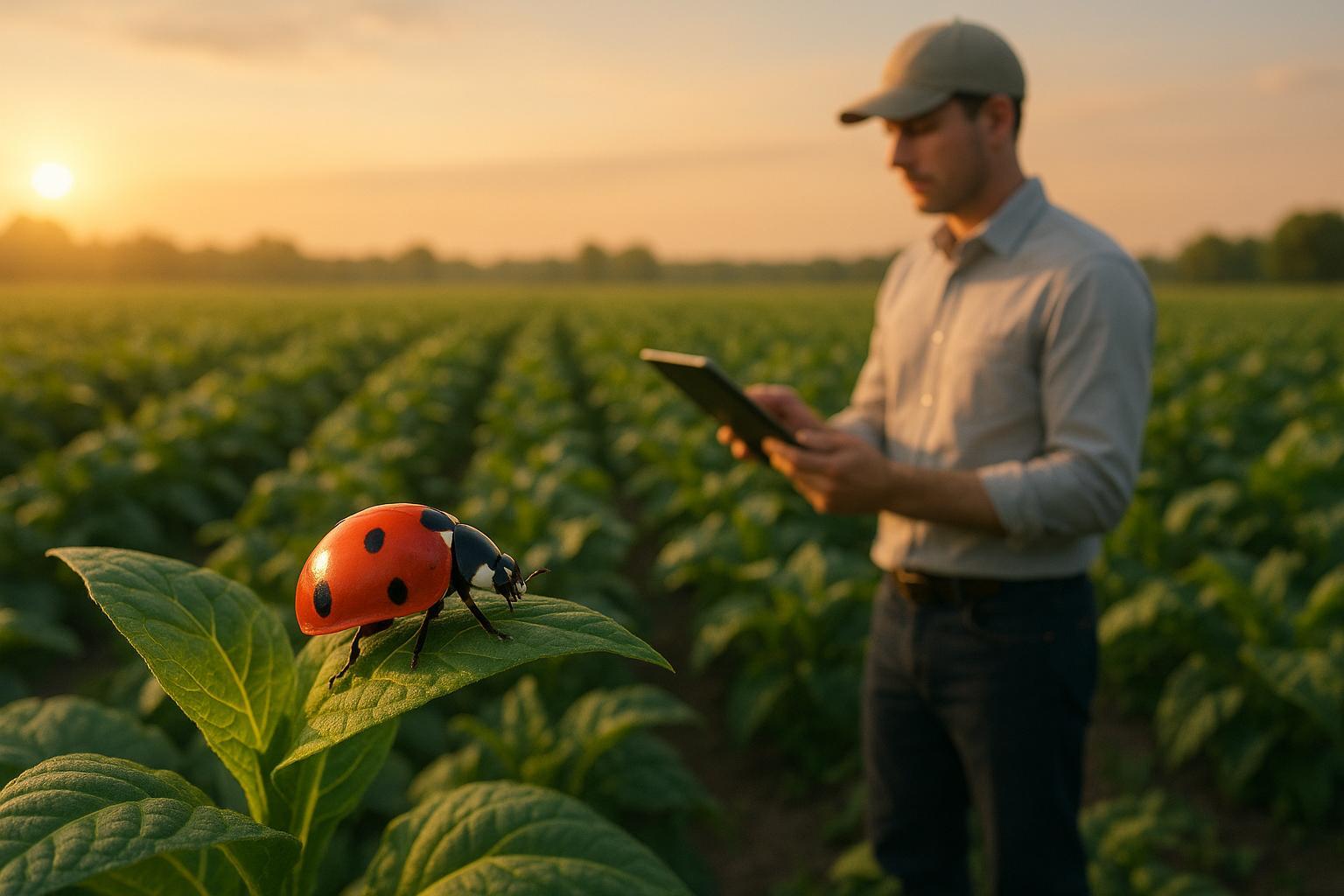
How to Measure Biological Pest Control Success
Learn effective methods to measure the success of biological pest control, from key strategies to monitoring tools and metrics.
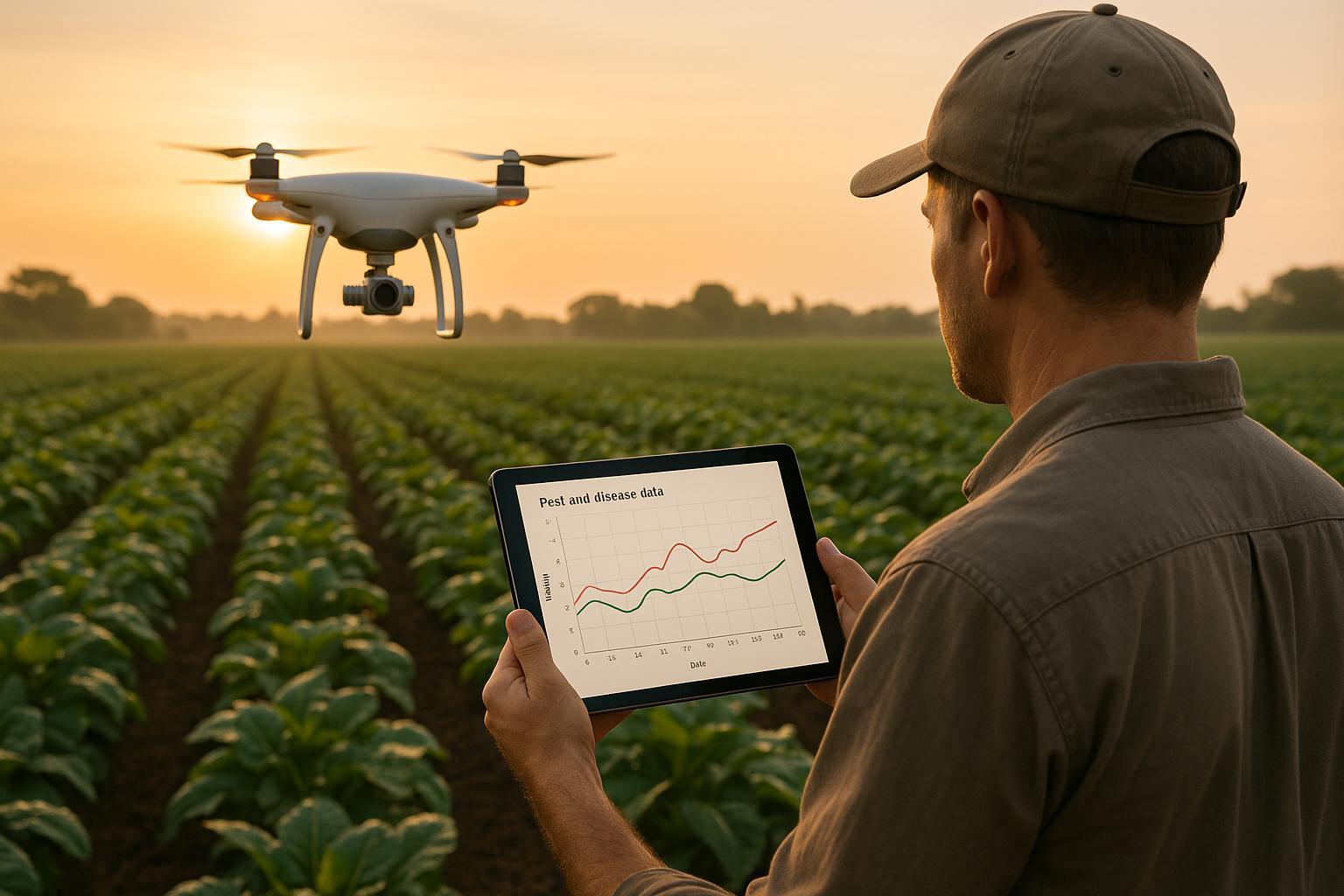
Top 7 AI Tools for Pest and Disease Management
Explore how AI tools are revolutionizing pest and disease management in agriculture, enhancing efficiency and sustainability for farmers and gardeners.
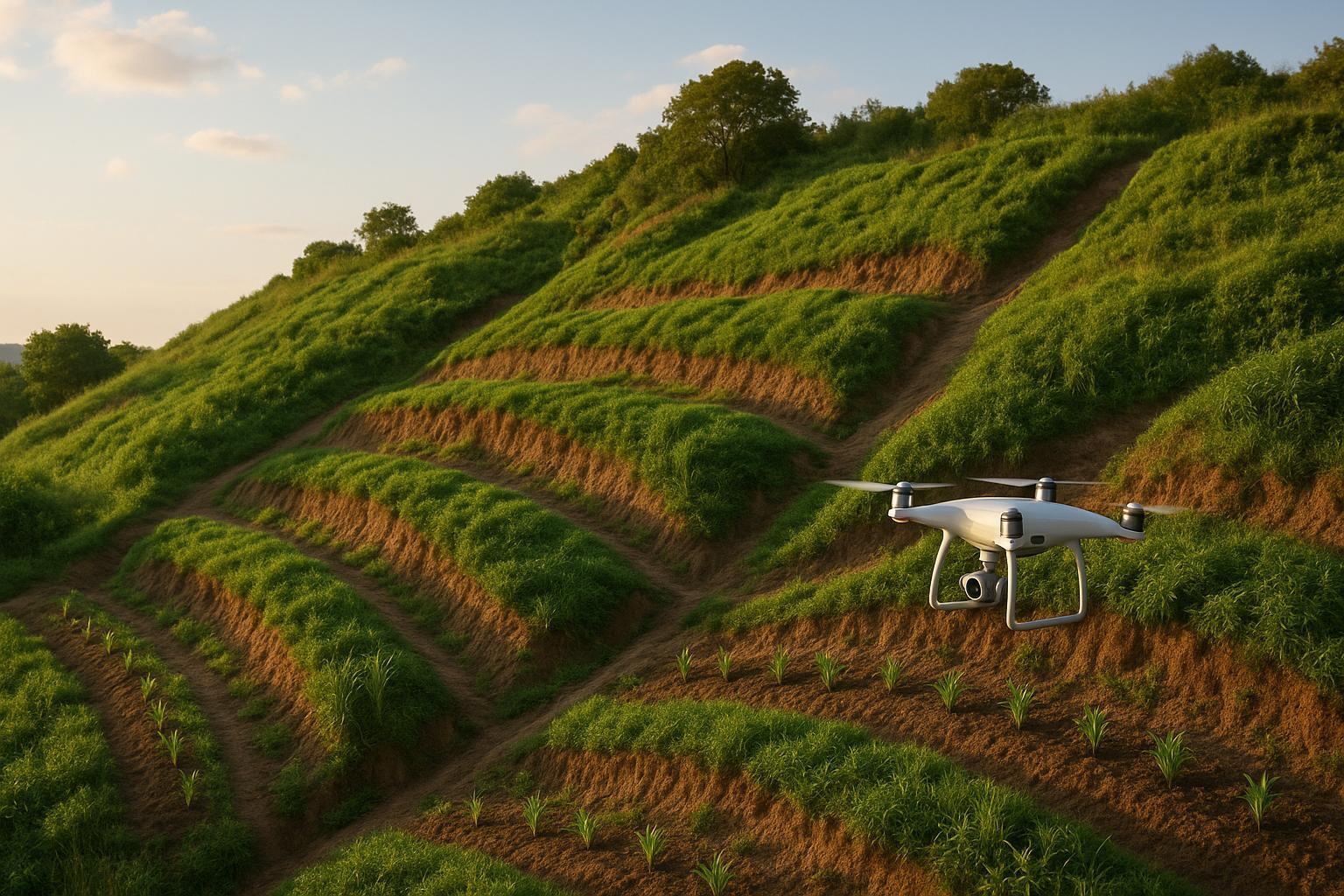
AI Tools for Soil Erosion Control
Explore how AI tools are revolutionizing soil erosion control with real-time monitoring, mapping, and tailored strategies for effective land management.
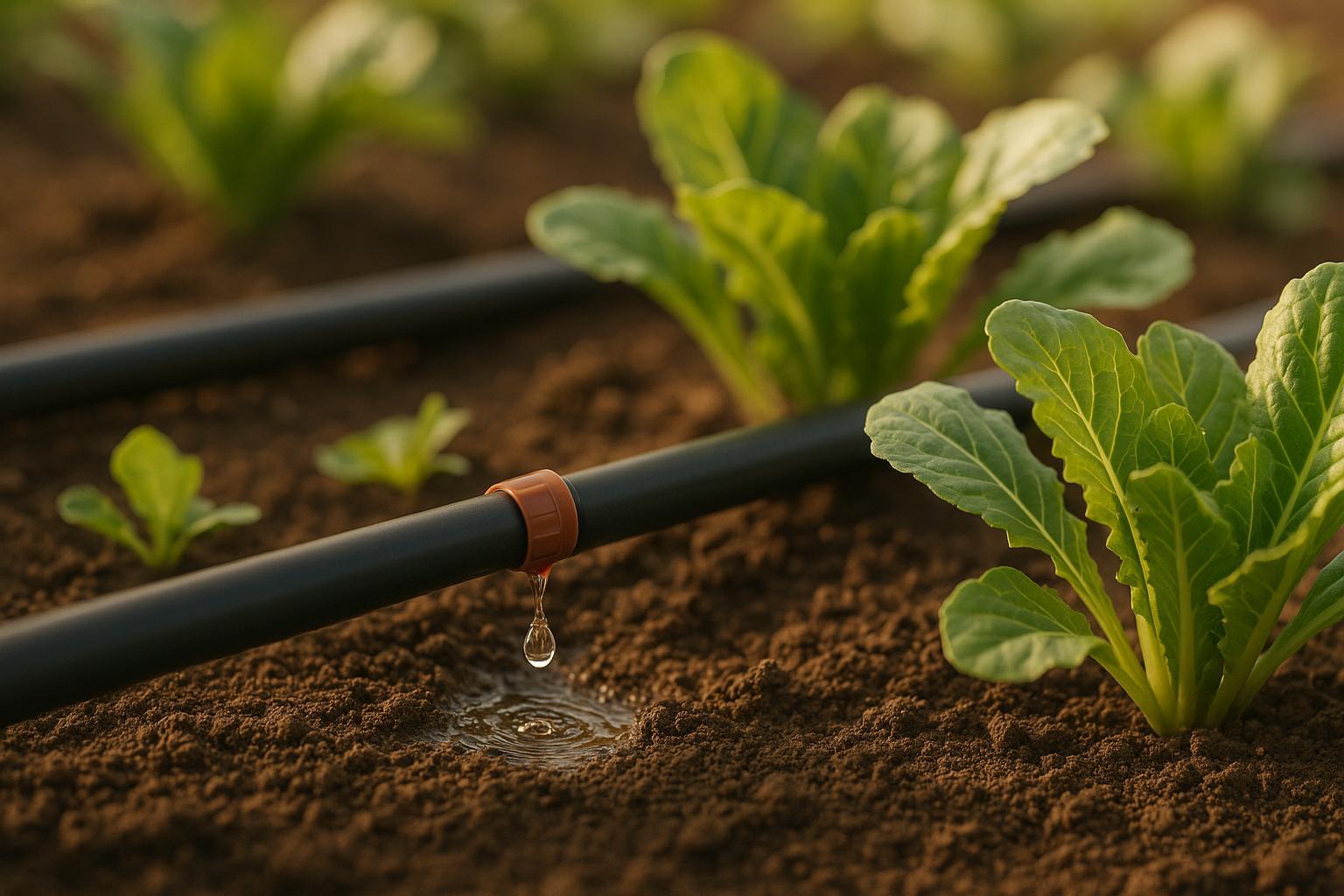
Preventing Algae in Drip Systems: Best Practices
Learn how to prevent algae growth in drip irrigation systems with effective strategies and maintenance practices that protect your plants and water flow.
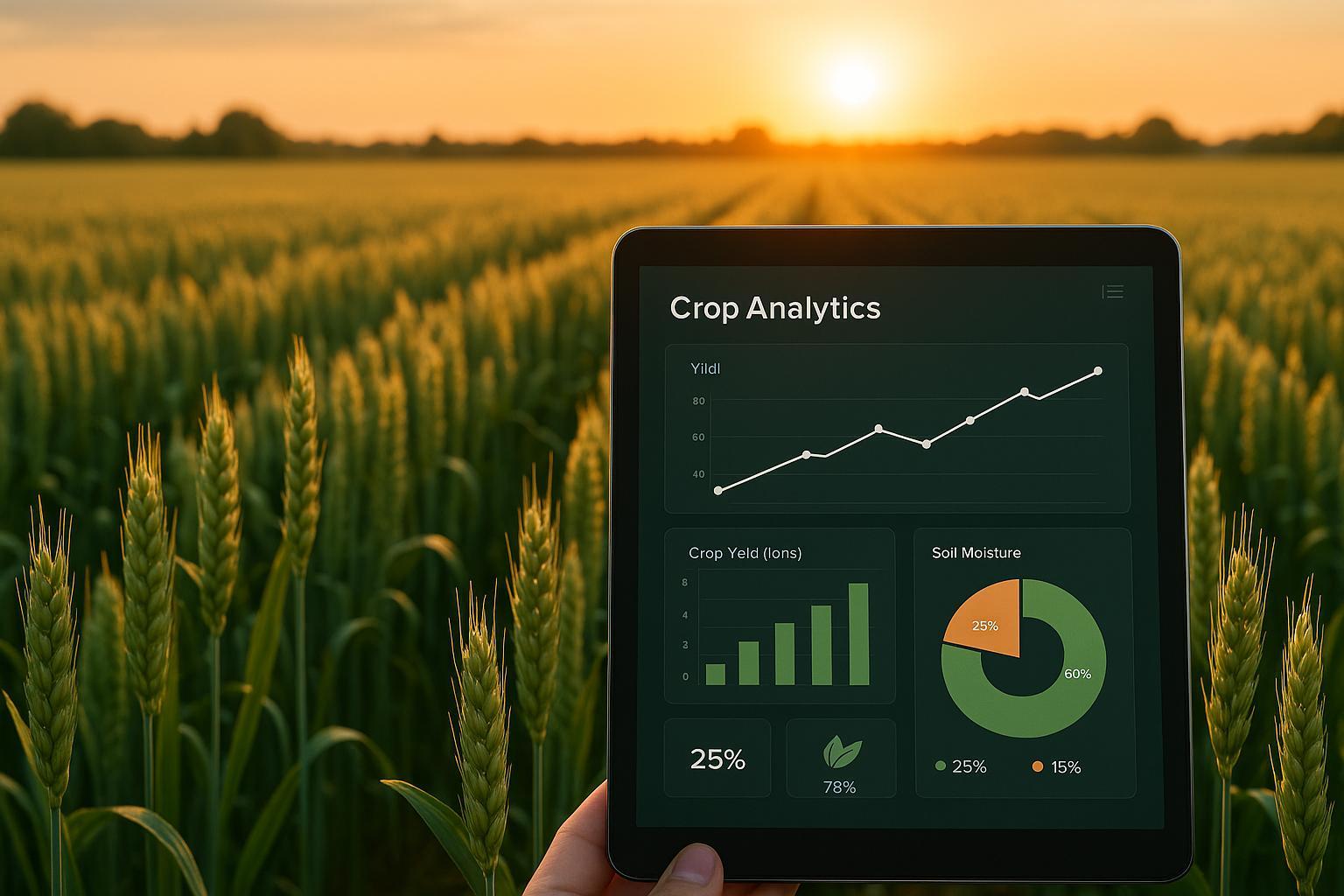
Top 7 Deep Learning Models for Crop Yield Estimation
Explore the top deep learning models transforming crop yield estimation, from DNNs to hybrid architectures, enhancing agricultural decision-making.